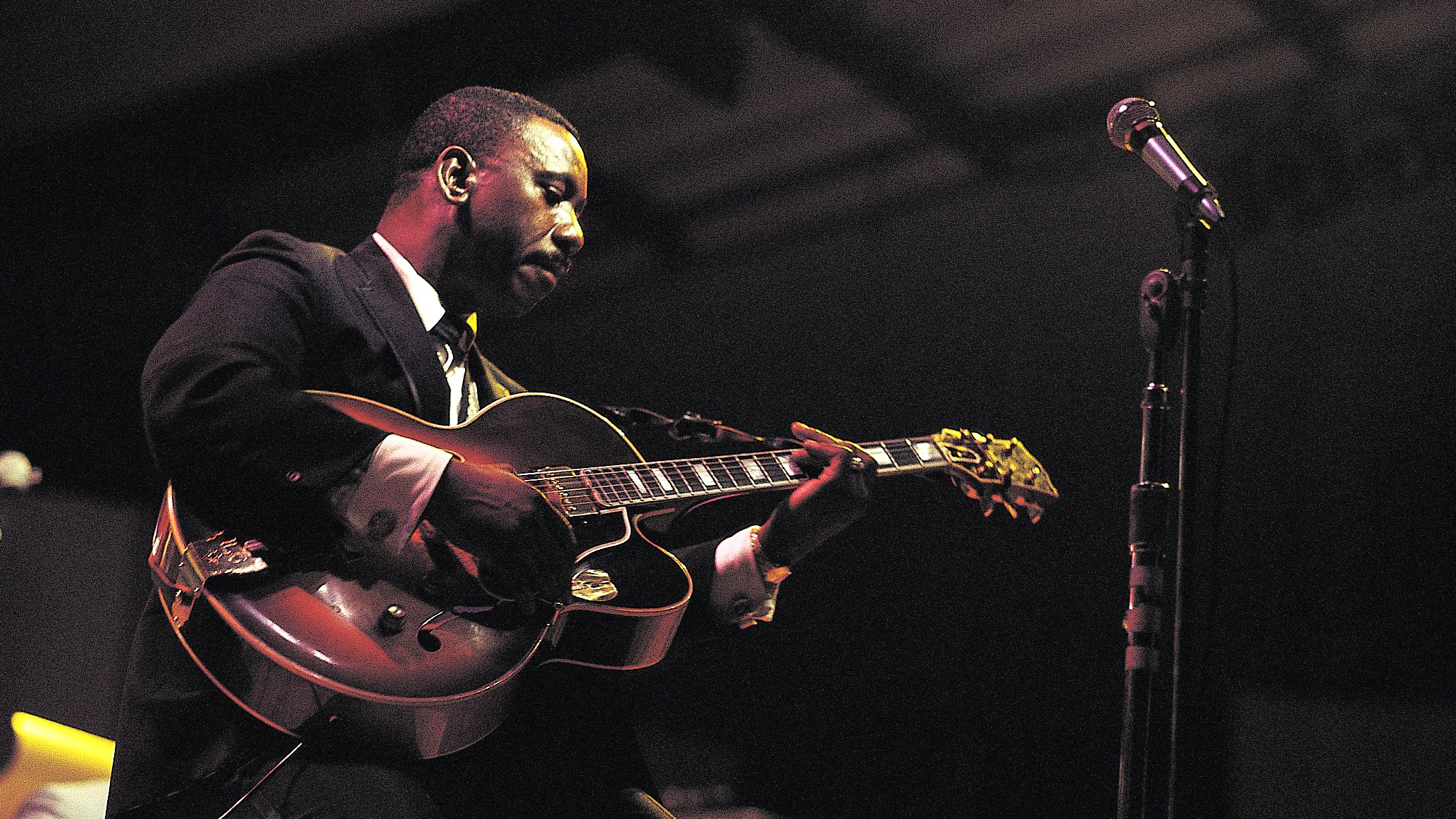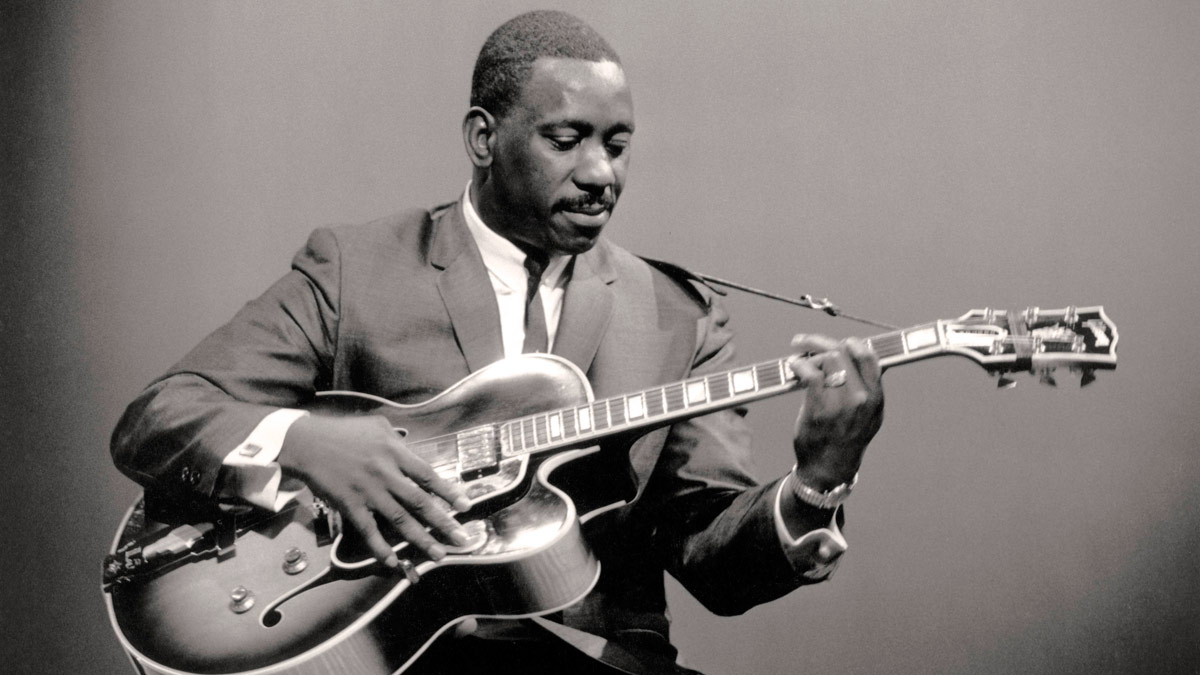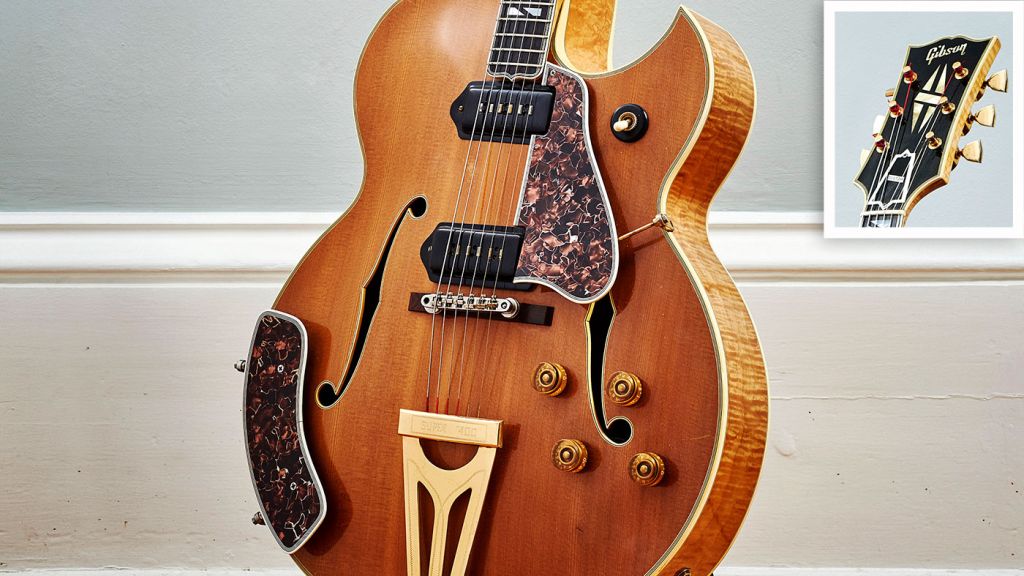10 of the greatest Gibson archtop guitar tones of all time
From Wes Montgomery to Mark Knopfler, Scotty Moore and the original electric guitar hero, Charlie Christian

A Gibson hollowbody was in the hands of the first electric guitar hero, and helped shape the blueprint of rock alongside another icon in 1955. They can be a jazz mainstay or a choice for rock legends looking for a different timbre for their playing voice.
With so much history carried by these guitars that helped shaped music from 1922 Gibson L-5 onwards, it's a good time to take stock with ten of many potential tonal archtop highlights.
1. D-Natural Blues – Wes Montgomery (The Incredible Jazz Guitar Of Wes Montgomery, 1960)
Gibson L-5CES

An octave melody line with a tone as smooth as melted chocolate – Wes Montgomery brushes the strings of his deep-bodied Gibson L-5 CES archtop just behind the guitar’s single forward humbucker with the fleshy part of his thumb here, to create a timeless guitar sound.
Later in the solo, Montgomery uses the callus on his thumb to add grit to his tone. “He would get one sound from the soft parts and another by using the corn,” mused George Benson. “That’s why no one will ever match Wes.”
2. Maybellene – Chuck Berry (single, 1955)
1955 Gibson ES -350
The powerful P-90s on Chuck Berry’s Gibson ES-350 make the opening licks sound like they were recorded in a toilet. It’s pure rock ’n’ roll filth tone in 1955; setting a scintillating blueprint for the many, many players that would follow in Chuck’s trailblazing, duck-walking footsteps.
Want all the hottest music and gear news, reviews, deals, features and more, direct to your inbox? Sign up here.
3. Flying Home – Charlie Christian, Benny Goodman Sextet (The Original Guitar Hero Compilation, 1939)
1939 Gibson ES -150
The first-ever star of the electric guitar played a Gibson ES-150 that would come to define jazz tone as his playing would ultimately come to define jazz guitar: neck pickup, warm and clean.
Coming as a package with an EH85 amplifier, the pair cost $150 – the fee Benny Goodman paid Christian to play in his sextet, per week, in 1939.
4. Hound Dog - Scotty Moore, Elvis Presley (Greatest Jukebox Hits, 1956)
1954 Gibson L-5 CES
Scotty’s P-90-equipped Gibson L-5 and Ray Butts amp growl into life as the first solo starts down on the low notes of the fingerboard. The bridge pickup is almost distorting, just on the verge of breaking up, and when the lick climbs and hits the top strings, anyone with a spine can feel it tingle.
Completely timeless, and the stuff legends are made of.
5. Cat scratch Fever – Ted Nugent (Cat Scratch Fever, 1977)
Gibson Byrdland
The Motor City Madman has spent decades proving that archtops aren’t just for jazzers by somehow taming the feedback for his hard-rocking excursions.
One of his omnipresent Byrdlands is singing a mean riff here, but it isn’t through a Marshall. It’s rumoured that the Nuge used a Fender ‘Brown’ Deluxe combo with Electro-Voice SRO speakers.
6. Fade To Black – Mark Knopfler, Dire Straits (On Every Street, 1991)
1953 Gibson Super 400 CES

A rare guitar with a value to match, the Alnico pickup loaded guitar’s studio outing came with a pick through a Fender Vibrolux for a short break in On Every Street’s title track, but was used more exclusively on the band’s understated live take on the jazzy blues of Fade To Black – just one of the classic guitar tones Mark Knopfler conjured up for this era-defining record.
7. I'm Gonna Find Another You (live) – John Mayer (Where The Light Is, 2007)
1977 Gibson L-5
Always the purveyor of impeccable tone, John Mayer is the kind players lust after here; he shares three solos with his bandmates, but his blonde Gibson L-5 channels intimate, raw talent through the neck pickup…
There’s also the small matter of his signature Two-Rock head and ultra-exclusive Dumble Steel-String Singer in the mix.
8. Stormy Weather – Joe Pass with Ella Fitzgerald (Duets In Hannover, 1975)
1960 Gibson ES-175

A blissful duet between bona fide jazz legends. Joe’s Epiphone Emperor II signature was only released just before his death in 1994, so here, he’s playing his long-favoured ES-175 with PAFs (a gift from a fan in 1963).
An advanced fingerstyle player, Joe clipped his nails short to enable just his tips to make contact with the string.
9. Nothing's Changed – Robben Ford with Jimmy Witherspoon (Spoonful, 1975)
Gibson Super 400 CES
Way back when he was sideman to Jimmy Witherspoon, and before his Dumble days, a young Ford always had great tone to match his cultured rhythm and lead playing.
He was blazing with a Super 400 through a Fender Twin here, adding bite to the sweetness for one of his most expressive solos ever in this slow blues.
10. Reptile – Eric Clapton (Reptile, 2001)
1955 Gibson L-5
God has spoken with an SG, a 335, a Les Paul and a Strat, but here, he used an L-5 because he wanted it to “personify” Reptile, opening with the unexpectedly samba-jam feel of the title track.
The jazzy tone was inspired by a woolly sound BB King would often employ, and the L-5 was played through a 1958 Tweed Fender Twin amp.